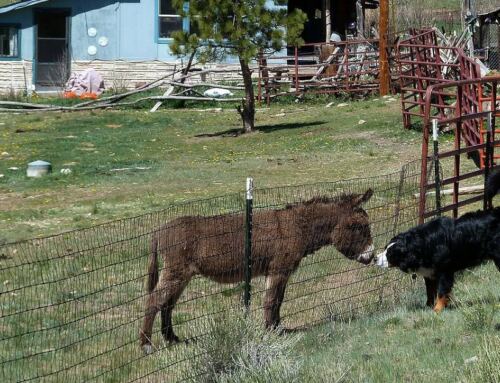There is so much progress that needs to be made in regard to how people “think” about animal behavior and training that it can seem overwhelming. But seven years ago I had to seek out and search for information regarding the most humane and effective ways to help dogs with fear based behavior challenges, whereas today it streams on my Facebook page and twitter account. Articles like this one, sharing the research done on how our intervention when a dog is scared can help alleviate their fear, is becoming mainstream. The science and research is being repackaged for mass consumption. It’s about time. But don’t think that everyone is buying it.
There are those who, due to an inconsistency in the terms we use to “talk” about behavior, will go on endless semantic journeys to dispute the claim that “comforting dogs does not reinforce fearfulness.” Comforting will be termed coddling and the methodology for applying either will be criticized. In one way it’s good. It means people are thinking, but when pieces of the puzzle don’t belong there, it’s difficult to come up with the right picture.
One such piece is the misunderstanding that people have regarding the use of the term “reinforcing” and how it is applied to behavior versus emotional responses. Behaviors that are reinforced can be expected to increase. Behaviors based on powerful emotional responses, if paired with what one might label a “reinforcer” (the same bit of cheese that increased the chances that a dog would sit when asked) cause a decrease in the emotional response, and subsequently we are likely to see a decrease in the behavior associated with the emotion. This is because we are counter conditioning the emotional response. Not all behavior is created equal.
Let’s use “hunger” as an example. Though not exactly an “emotion” if we feed an animal who is hungry, their hunger will decrease, and unless there is an eating disorder involved, the behavior associated with hunger, eating, will decrease. We do not reinforce hunger by feeding an animal. We do not reinforce fear when we comfort an animal. In both cases what constitutes food or comfort is dependent on the animal’s definition of them. One dog may find being stroked and held comforting, another might find it annoying. A hungry lion would not look at a bale of hay and see a meal, but a horse would. In either case if we know what a dog finds comforting or an animal thinks is tasty, and give it to them, we are likely to see a decrease in the behaviors associated with either being scared or hungry (after they’re done chewing of course).
I am going to propose that since the word “comfort” seems to be difficult for people to accept, even though it can be clearly defined-
1. To soothe in time of affliction or distress.
2. To ease physically; relieve.
n.
1. A condition or feeling of pleasurable ease, well-being, and contentment.
2. Solace in time of grief or fear.
3. Help; assistance: gave comfort to the enemy.
4. One that brings or provides comfort.
5. The capacity to give physical ease and well-being: enjoying the comfort of my favorite chair.*
can be replaced by the term “to support.”
My aging border collie Finn was walking down a flight of stairs in our house when I could hear his nails scrambling on the wood. I got to him in time to prevent him from tumbling down. I helped him right himself and supported his hind end as he continued down. At the bottom I gave him a cheer and opened the door so he could go outside. I provided him with what he needed to get down the stairs unharmed. It is likely that he will avoid the stairs, and until I can put a runner down I would prefer that he did. But I did not want him to be injured to learn that lesson. Ultimately, when it is safe for him to do so, I want him to continue to go up and down the stairs on his own.
When we offer a stressed and scared animal our support we do so based on the needs of that animal. It does not make sense to state unequivocally that we should not attend to these needs because we may not be clear on what that support should look like. Or having provided that support inexpertly in the past it is proof that it doesn’t help. Our goal is to help a dog develop the skills and confidence they need so that continuing support becomes unnecessary, but until that happens it would be foolish to stop providing it.
Advising that supporting someone trying to learn to swim will keep them a life-long non-swimmer doesn’t make sense, and it’s dangerous. Someone may not need you to hold their hand as they walk into the waves, but someone else might lest, they be swept under and drown.
*thefreedictionary.com/comfort





